Image Archive





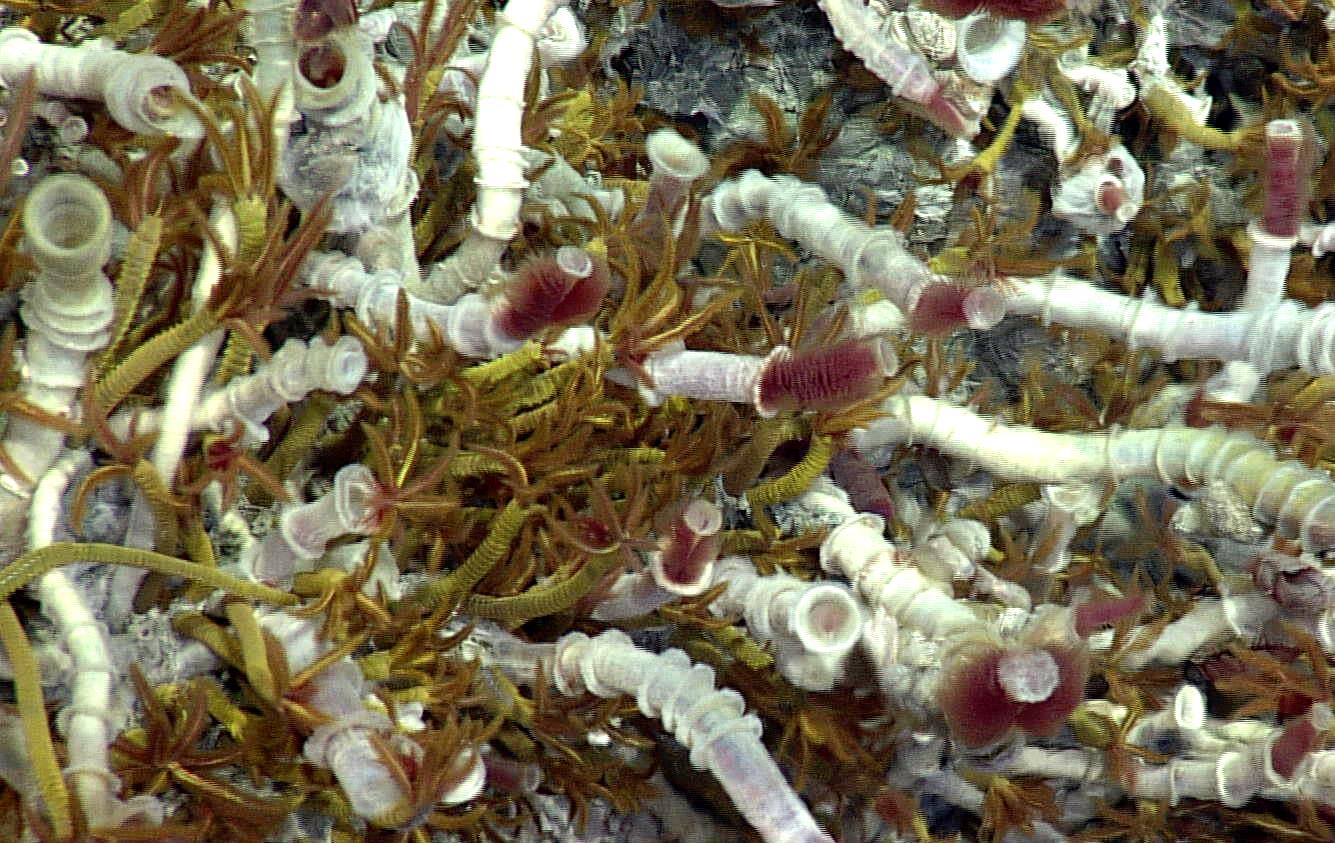


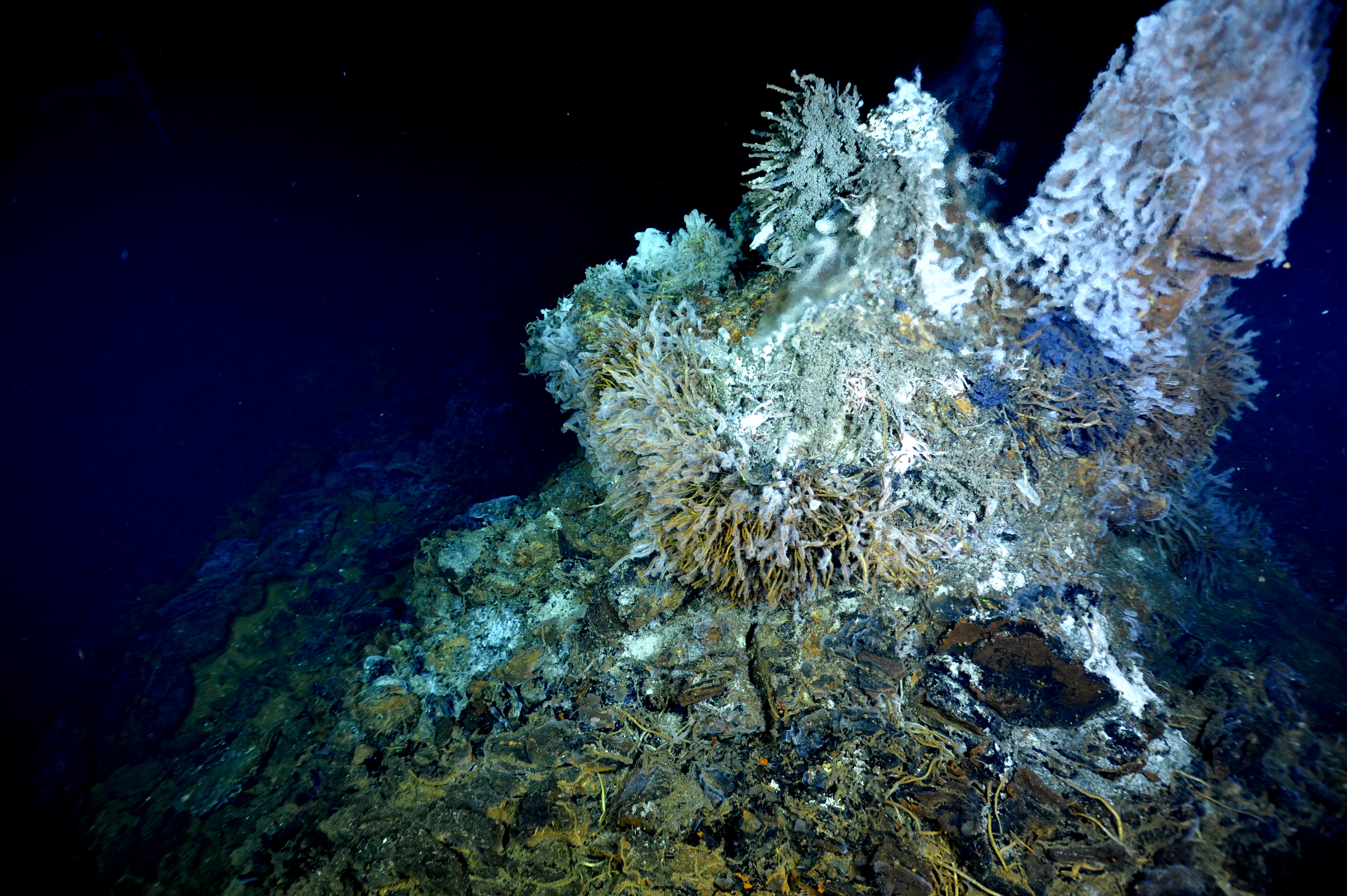

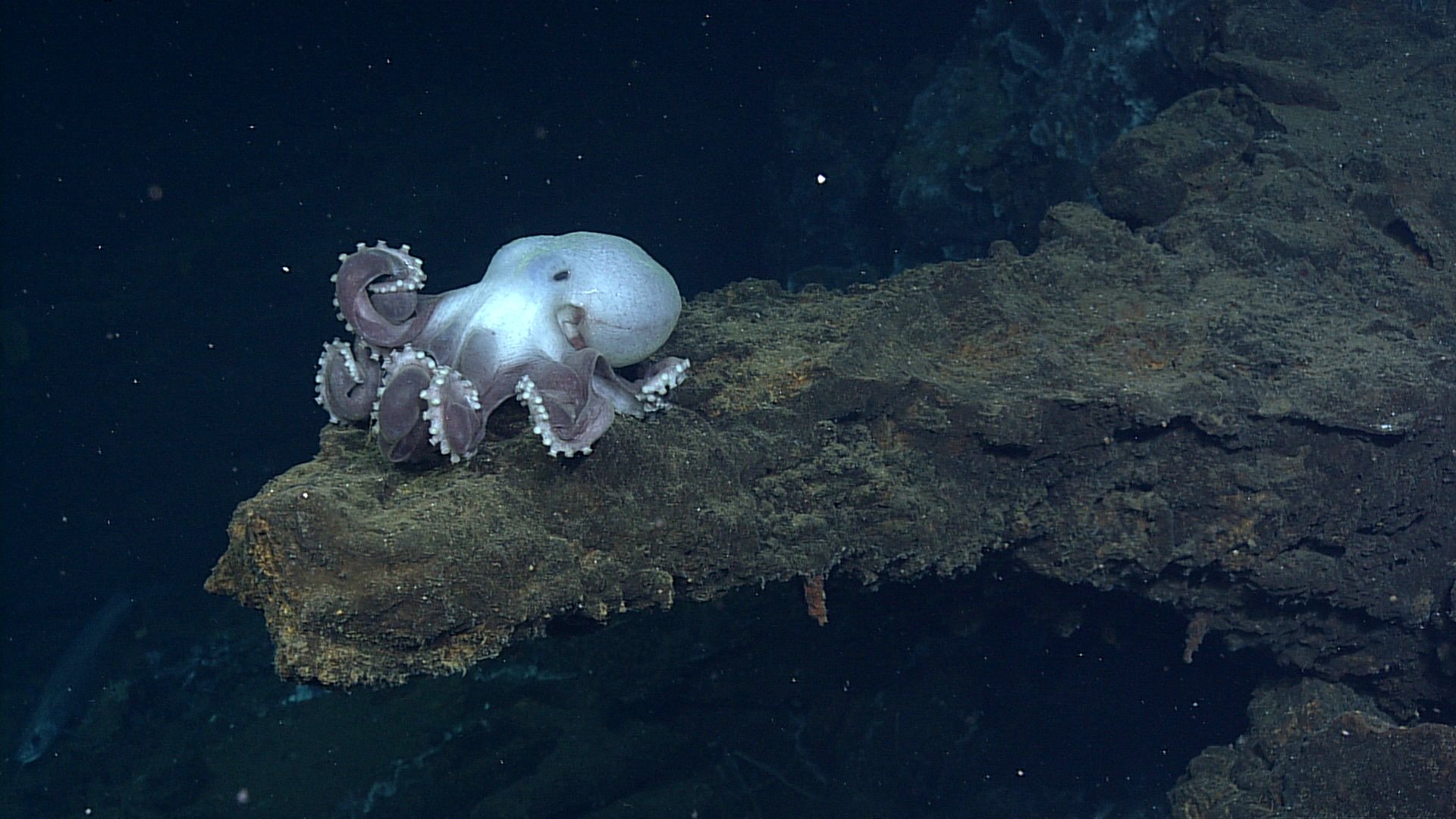
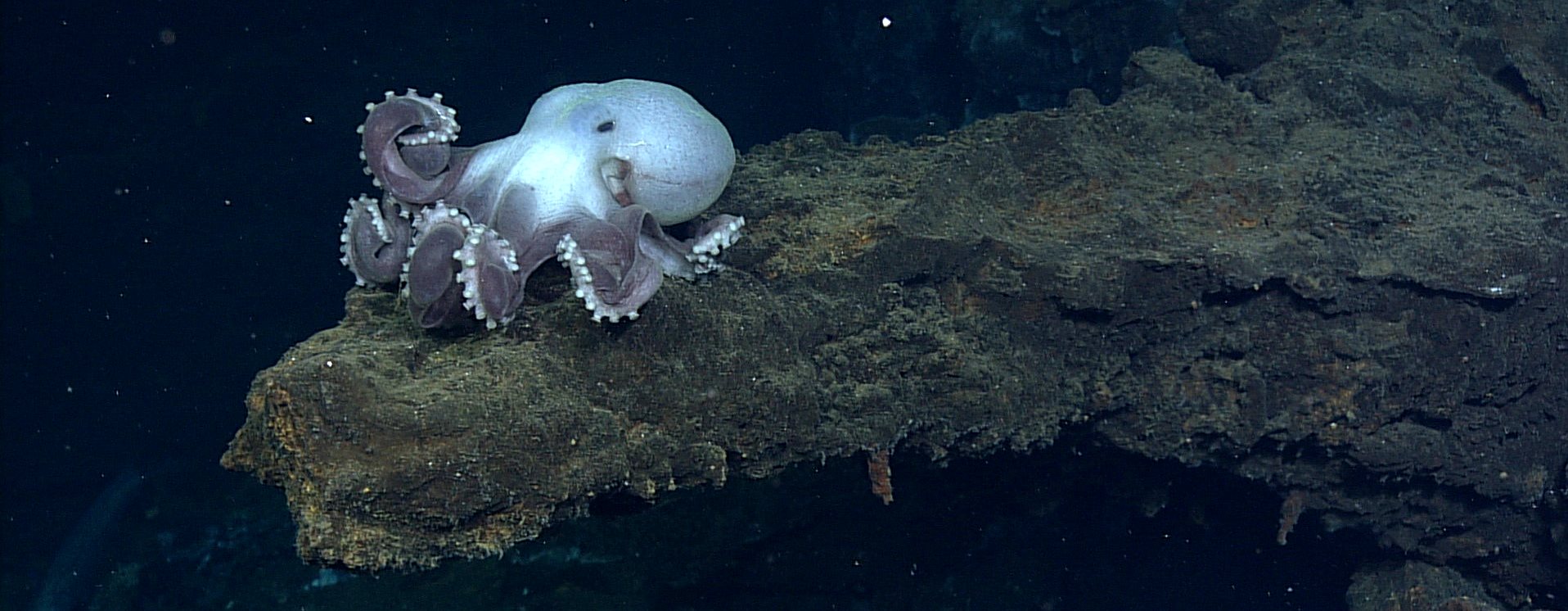



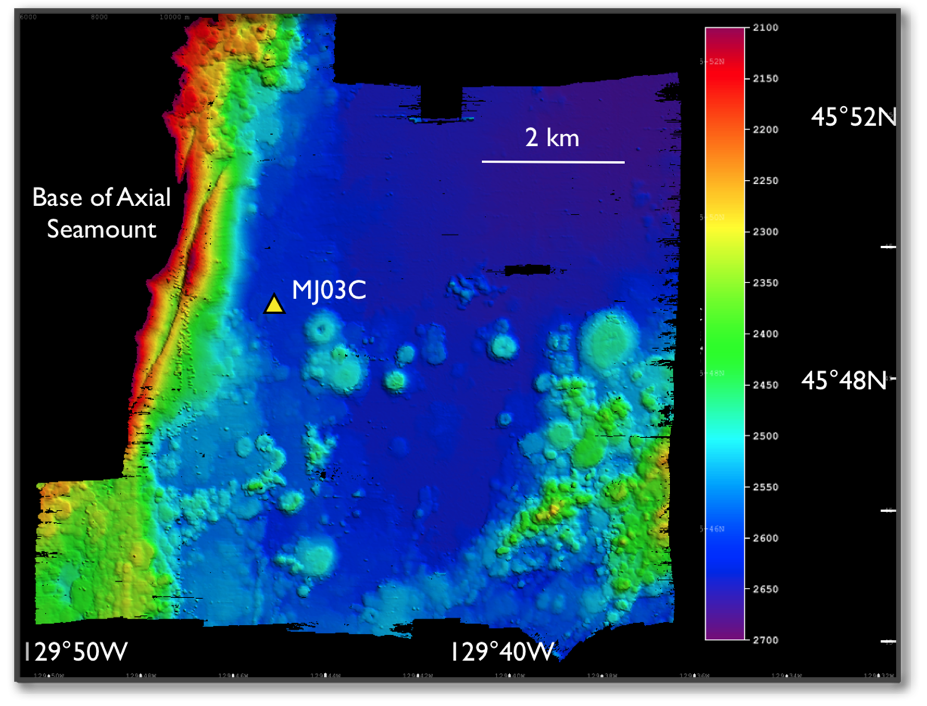











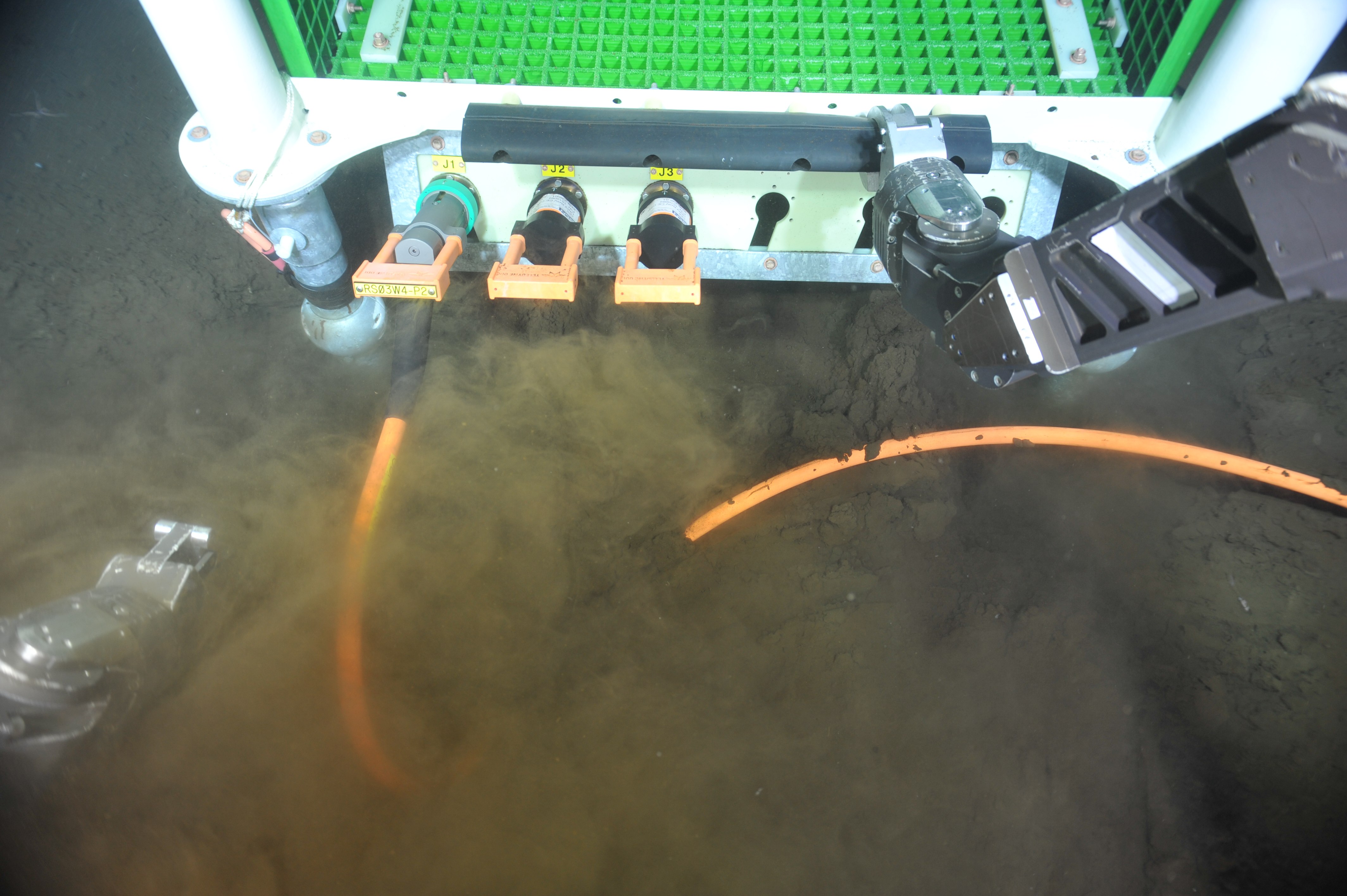

A spider crab dines on the remains of an unknown organism on Axial Seamount. Photo credit: NSF-OOI/UW/CSSF; Dive R1719; V14.

Spider crabs are quite common throughout Axial Seamount's caldera. Photo credit: NSF-OOI/UW/CSSF; Dive R1721; V14.

This red siphonophore, likely of the genus Marrus, is a colonial animal that generally lives in the mesopelagic zone of the ocean. Photo credit: NSF-OOI/UW/CSSF; Dive R1718; V14.

A short-period seismometer was installed and connected to a junction box in the International District hydrothermal field at the summit of Axial Seamount. Photo credit: NSF-OOI/UW/CSSF; Dive R1719; V14.

A beautiful octopus sits atop a ledge at the base of the hydrothermal vent called Escargot in the International District hydrothermal vent field at Axial Seamount. Credit: UW/NSF-OOI/CSSF; ROPOS Dive R1719; V14.

Palm Worms (Paralvinella palmiformis) coexist with Ridgeia Tubeworms on hydrothermal vents at Axial Seamount. Credit: UW/NSF-OOI/CSSF; ROPOS, V13.

On July 20, the medium-powere junction box MJ03C was installed in the International District hydrothermal vent field on ROPOS Dive R1717. It was connected to a ~2300-m-long cable (RSO3W6) that will connect this system to Primary Node PN3B. A temperature-resistivty sensor (TRHPHA301) is inside the J-Box, awaiting installation during a follow-on dive. Photo credit: NSF-OOI/UW/CSSF; Dive 1717; V14.

On July 18, 2014 the Low-Voltage Node LV03A was deployed at Axial Base. It was moved on R1715 to its final location. It will provide power and communications to two moorings to be installed at this site. Primary Node PN3A is to the right. Photo credit: NSF-OOI/UW/CSSF; Dive R1714; V14.

El Gordo, at International District, is a site for Regional Cabled Array instrumentation in 2014. Brown tubes are stressed tubeworms covered in filamentous bacteria. Credit: UW/NSF-OOI/CSSF; ROPOS Dive R1719; V14.

Ciliates, purple single-celled Protists, colonize the base of Escargot hydrothermal vent. Credit: UW/NSF-OOI//CSSF; ROPOS Dive R1719; V14.

The large pink octopus (likely Muusoctopus sp.) sits on a ledge at Escargot hydrothermal vent in the International District Hydrothermal Field. Credit: UW/NSF-OOI/CSSF; ROPOS Dive R1719; V14.

Octopus banner

A large salp drifted by the camera near to the cable at the base of Axial. Salps are planktonic Tunicates, which belong to Phylum Chordata, along with all vertebrate organisms. Photo credit: NSF-OOI/UW/CSSF; V13.

Just prior to launching, ROPOS is lifted by the crane and placed on top of, then mated to, ROCLS. Photo credit: Christina Ramirez, University of Washington, V14.

Medium-Power Junction Box MJ03C rests on the platform for ROPOS, awaiting connection to the underbelly of ROPOS. This node was installed on the seafloor during dive R1717.

Brendan Philip, a recent graduate from the School of Oceanography undergraduate program, designed and ran this EM302 bathymetric survey in the area where two RSN-OOI moorings will be installed at the base of Axial Seamount. Photo credit: Deb Kelley, University of Washington, V14.

The ROV ROPOS has an RSN-OOI , medium-powered junction box, MJ03C, secured to its underbelly for transport to the International District hydrothermal vent field. The junction box will provide power and communication to a diverse suite of chemical, temperature, and biological sensors, in addition to a digital still camera. Photo credit: NSF-OOI/UW/CSSF; Dive R1717; V14.

screenshot2014-07-20at1.44.03pm_med

Dana Manalang and Eric Olsen (UW) work with UW students Gina Hansen and Don Setiawan to.prepare the end of a fiber optic cable segment so that it can be spooled by hand onto the large cable spool. The spool will then be transported by ROCLS for installation on the seafloor. Photo credit: Mitch Elend, University of Washington, V14.

screenshot2014-07-20at12.54.00pm_med

Safety is always the #1 priority, even with the scientific mission. Photo credit: Charles Garcia, University of Washington, V14.

Leg 1 University of Washington participants Skip Denny, Katie Bigham and Sam Albertson watch ROPOS' progress during dive R1716. Each action viewed and recorded on HD video must be carefully logged and documented with still photographs. Photo credit: NSF-OOI/UW/CSSF; Dive R1716; V14.

screenshot2014-07-20at12.17.06pm_med

screenshot2014-07-20at11.15.14am_med

The El Gordo Vent is located in the International District Hydrothermal Field. Credit: UW/NSF-OOI/CSSF; V14.

screenshot2014-07-20at10.38.36am_bigger

Holothurians and brittle stars at the base of Axial Seamount. Photo credit: NSF-OOI/UW/CSSF; Dive R1717; V14.

The 1 km extension cable from the Primary Node PN3A at the base of Axial Seamount is connected to the low voltage node LV013A, which will feed the two moorings at this site. Photo credit: NSF-OOI/UW/CSSF; Dive R1717; V14.
- Anemone
- Animal
- Arthropod
- ASHES
- Axial
- Axial Base
- Axial Biology
- Axial Caldera
- Bacteria
- Basalt Lava
- BEP
- Biofouling
- biolgoy
- Biology
- Camds
- Camera
- Camhd
- Central Caldera
- Ciliates
- Cnidaria
- Coastal Biology
- Crab
- Deep Profiler Mooring
- Dive Highlights
- Eastern Caldera
- Echinoderms
- Endurance Array
- Engineering Team
- ENLIGHTEN 10
- Exploratorium
- Fish
- Geology
- HD Camera
- HPIES
- Hydrate Ridge
- Hydrates
- Hydrophone
- Hydrothermal Vents
- Illustration
- Inshore 80 Meters
- Instrument
- International District
- J-BOX
- Jason
- Jellyfish
- Junction Box
- K12
- Lava
- Mollusk
- Moorings
- Nodes
- Nudibranch
- Octopus
- OOI
- Oregon Offshore
- Oregon Offshore 600 m
- Oregon Shelf
- Oregon Slope Base
- People
- PN1B
- PN1D
- Polychaetes
- PPSDN
- Primary Node
- RASFL
- ROCLS
- ROPOS
- ROPOS Dives
- ROV Team
- RV Revelle
- RV Sikuliaq
- RV Thompson
- Salp
- Sample
- SC13
- Science Team
- Sea Cucumber
- Sea Star
- Sea Urchin
- Seafloor
- Seismometer
- Sensors
- Shallow Profiler Mooring
- Shark
- Shipboard
- Shore Station
- Slope Base
- Smoker
- Soft Coral
- Southern Hydrate Ridge
- Sponge
- Squid
- Students
- Students & Guest Participants
- Tmpsf
- Tubeworms
- VISIONS 11 Leg 1
- VISIONS 11 Leg 2
- VISIONS 11 Viewers
- VISIONS 13
- VISIONS 14
- VISIONS 15
- VISIONS 16
- VISIONS 17
- VISIONS 18
- VISIONS 20
- VISIONS 22
- VISIONS 23
- Visualization
